Bonus Material: Free Ski Slope Strategy Swipe File
This strategy is not ideal for all businesses.
It is designed for aggressive content marketers who want consistent AND scalable traffic.
In fact, it’s the exact strategy I used to generate over $100k/mo revenue from the content marketing channel for one small startup (tracked using ChartMogul first touch attribution):

If you want to get 1,000,000+ visitors, 100,000+ leads, and 1,000+ customers per year, then THIS is the content strategy to do it.
Grab my Ski Slope Strategy swipe file below to see content examples from the strategy.
Then read on to create your own and scale your customers from content.
If you’re just starting to get your business off the ground, or running a small agency with a handful of clients, then I recommend you read this first.
The Ski Slope Strategy: Sales Focused Content Marketing (Without Link Building)
Backlinks, SEO, organic traffic… they are all important factors to focus on for long term growth. But nothing beats a content system with compounding traffic, that delivers consistent customers day after day.
Here’s what that looks like:

Ask any content marketer or SEO how to get bulk organic traffic to your website, and they’ll tell you this:
- Find link-worthy content (content that’s already generated a lot of links.)
- Make something even better (longer, more up-to-date, better designed.)
- Do link building to get it to rank on the first page of Google (email site owners that have already linked to similar content.)
That’s an old strategy from 2013.
The competition for content is so fierce now, you could link build for months and never see results. And even if you do get it to work, you have no clear strategy for how to get that traffic to convert into sales.
We Used The Ski Slope Strategy To Drive 1.7 Million Free Clicks, 133,435 Leads And 1,070 New Recurring Revenue Customers In 12 Months
For the last year I’ve worked with one of the leading SaaS companies. 12 months after executing "The Ski Slope Strategy", we drove 1,942,129 traffic to the blog. 1,718,798 of that was free traffic.

That traffic converted into 133,435 new email leads (and kept generating new leads consistently).

Over the year we learned an important lesson: the volume of traffic you get isn’t important.
What’s important is attracting qualified, wallet-ready leads.
As we refined our strategy over the year we started focusing on producing and promoting content to a smaller niche. This resulted in less leads that were more qualified to get results from our software.
We went from targeting ecommerce, bloggers, agencies and software companies to only focusing on getting small ecommerce business owners making ~$100k annual revenue to our website.
The result? Leads who read our content and converted into 1,070 new, monthly recurring revenue customers.
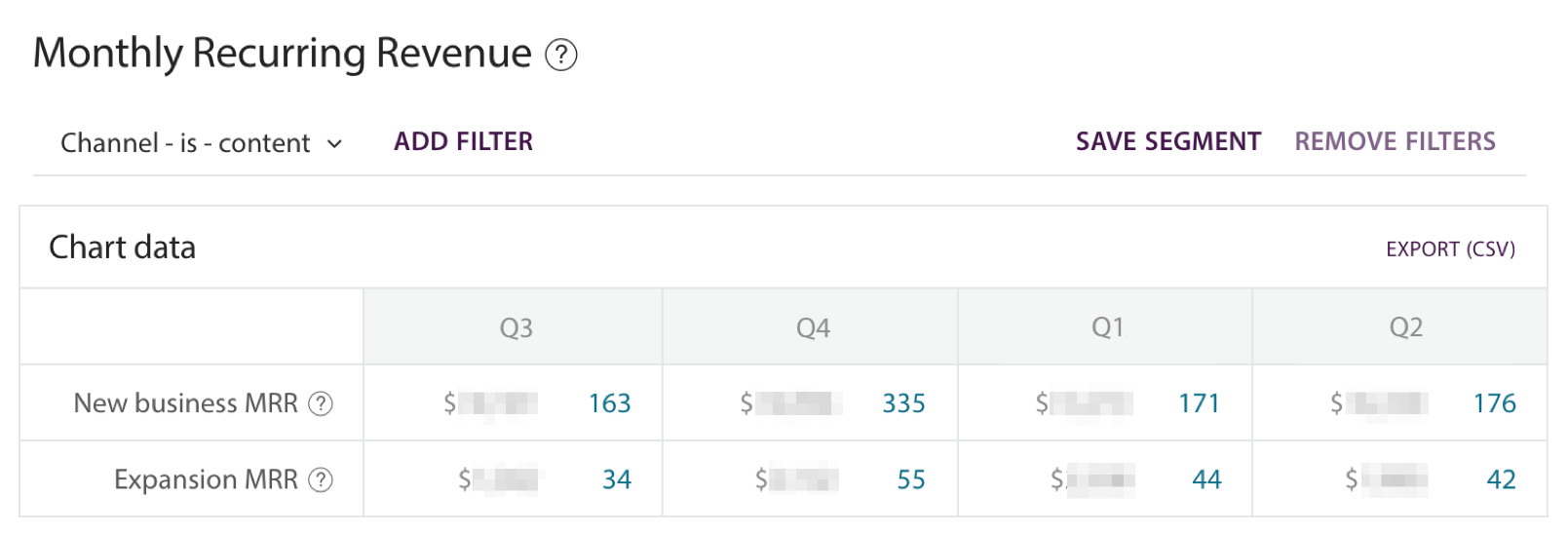
We didn’t build links, those came naturally as a byproduct of what we did.
What did we do?
The 3-Steps To Using “The Ski Slope Strategy” To Get Targeted Traffic That Converts Into Sales
There are three steps to execute The Ski Slope Strategy successfully.
Step 1: Build topic clusters to get new organic traffic.
Step 2: Run quarterly marketing promotions to get new leads.
Step 3: Promote case studies to convert traffic and leads into new customers.
Below is a breakdown of how every part of the strategy works. But first let me tell you what this has to do with a ski slope.
Have you ever gone skiing and seen the green circle, blue square, and black diamond runs?
You don’t just jump onto a black diamond run and start shredding it up. You’ll land face over ass. You do green circle runs consistently until you’re ready to level up.
The more runs you do, the better you get.
What you’re doing here is guiding your target customers down the “ski slope” to get them to know, like and trust you… then you’re guiding them to the finish line (aka your offer).
Once you build your mountain of content, you will have hundreds of your ideal customers running down YOUR content slopes, and converting into high lifetime value customers who come back year after year.
Bonus: I put together a swipe file of the highest performing Green Circle, Blue Square, and Black Diamond content we use with The Ski Slope Strategy. You can access it for free inside this Ski Slope Strategy Swipe File.
Step 1: Build Topic Clusters To Get New Organic Traffic
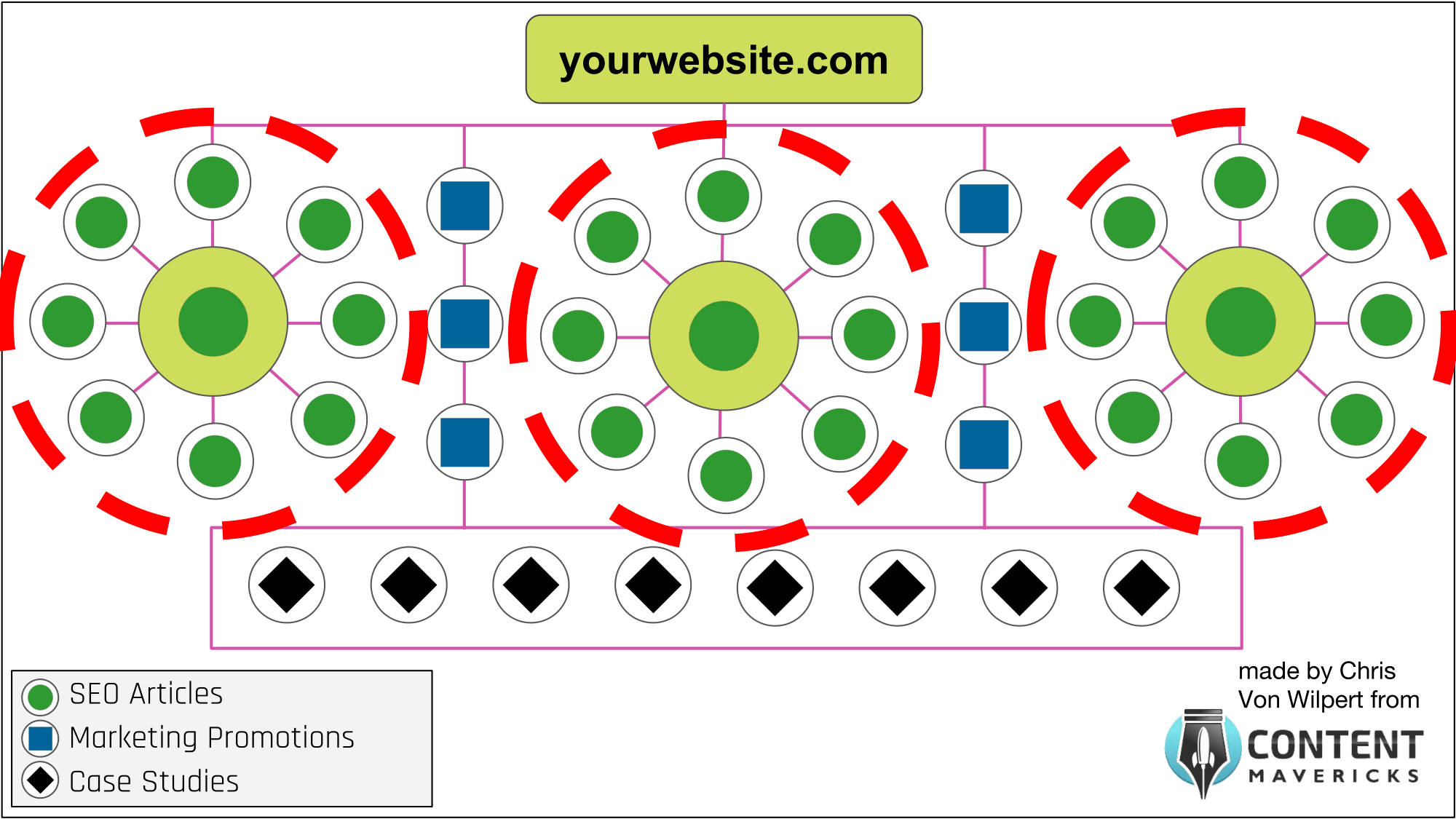
Green Circle Content
Green Circle Content is the content you use to drive consistent, compounding traffic that gets new prospects aware of your business. Here’s how to do it:
First, plan out your Pillar pages. These are the big green circles in the middle of your topic clusters that are going to bring you bulk organic traffic. Say for example I want to attract ecommerce businesses to buy my marketing software. In that case I’d create a list of short tail topics that are relevant to my business.
I use two simple criteria to decide which topics to make into Pillar pages:
- Any search term with 1,000 or more monthly search volume. This is not a hard number, just a number I chose to make it worthwhile investing time into building my Pillar page, and a topic cluster around it. Anything less than 1,000 and you may find it hard to find subtopics with search volume.
- Any topic with a high likeliness to convert. I give every topic on my list a “likeliness to convert” rating (high, medium or low). I’m not going to live forever, so I only want to invest my time writing about topics where I know those readers will have a high likelihood to be interested in what we sell.
Now I have an initial list of Pillar pages I want to target, prioritized by how likely they are to convert for my product:

An easy way to create this list is to install the Keywords Everywhere browser extension, then type in your primary search term (e.g. “ecommerce”) with one extra letter on the end (e.g. “m”). Google’s autocomplete feature will then serve you up ideas with the global search volume data listed beside each search term.
To come up with the list above I simply typed “ecommerce a”, “ecommerce b”, “ecommerce c”, etc into Google and added relevant topics to my list. Here’s an example of how I found the “ecommerce marketing” topic and search volume:
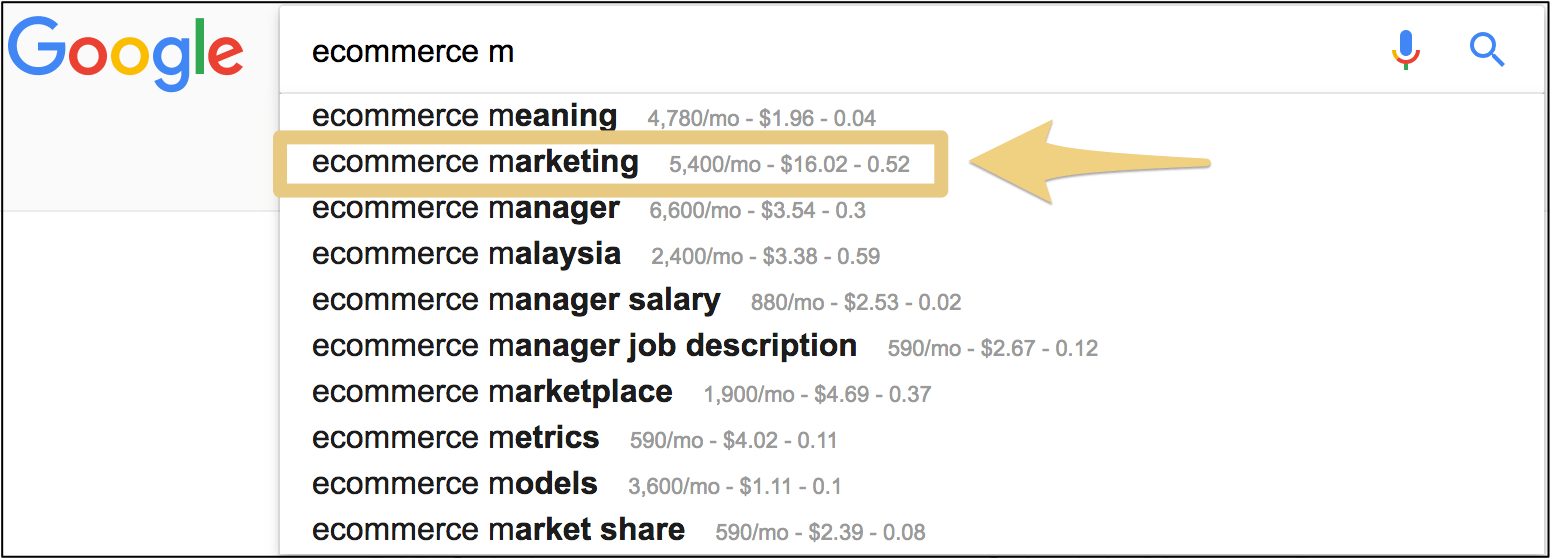
Now let’s say I’ve identified that “ecommerce marketing” has a high likeliness to convert for my business, and a good amount of search volume. In that case, I’ll start building a topic cluster around it by planning SEO articles my team can write that are directly related to ecommerce marketing.
Topics like “ecommerce marketing ideas”, “ecommerce marketing tools” and “ecommerce marketing automation.” Here’s what my list might look like:
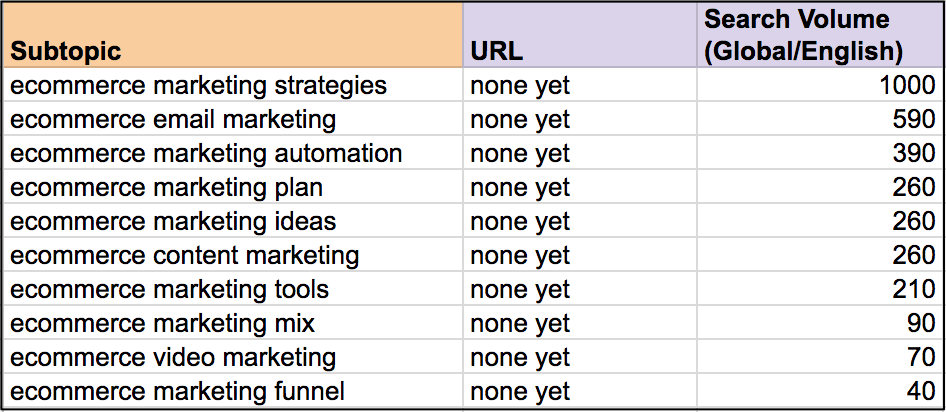
For best results you need to select subtopics that people are already searching for on Google AND that are directly related to the main topic. For example if I wrote about “ecommerce facebook ads” it would not be a good fit for my Ecommerce Marketing topic cluster. Although Facebook ads are one type of ecommerce marketing, it’s not a directly related term.
To find directly related terms with search volume, simply go to Google Keyword Planner and search for keyword ideas filtered by Keyword text that contains your main topic. This will give you a list of subtopics with search volume that Google’s algorithm think are the most closely related to your main topic.

You should select the subtopics you think make the best fit for your topic cluster, like I did above. There is no right or wrong number for the number of subtopics you should have in your topic cluster. You should try and cover every relevant subtopic with search volume.
Remember: you are building THE pillar piece of content that everyone will want to talk about (and link to.)
Don't have time to write Green Circle Content?
The fastest and easiest way to drive consistent, organic traffic with Green Circle Content is to hire a content writer who knows how to write SEO content topics for you.
If you'd like, our partner content team can write SEO-friendly, actionable, step-by-step content for your topic clusters.
Then promote them for you so they rank on Google. Click here to learn more.
As you cover each subtopic you should publish and promote it on your blog. Then once all subtopics are published, you will create your Pillar page.
Your Pillar page should be its own individual blog post published on your top-level domain (e.g. yourwebsite.com/ecommerce-marketing) for best performance. For my ecommerce marketing example, my Pillar page would define what ecommerce marketing is, describe different subtopics within ecommerce marketing, and link to my blog posts on the subtopics.
After publishing and promoting it, I’ll go back to all my SEO articles that were published on the blog in the topic cluster, and link them to two places:
- My new Ecommerce Marketing Pillar page.
- All subtopic pages in my topic cluster.
Want to see what a successful Pillar page and topic cluster looks like? I put together a swipe file of Green Circle Content examples we’re using right now to grow organic traffic AND capture new leads using The Ski Slope Strategy. You can see all the examples inside this Ski Slope Strategy Swipe File.
Now it’s time to get your target customers on those Blue Square runs.
Step 2: Run Quarterly Marketing Promotions To Get New Leads
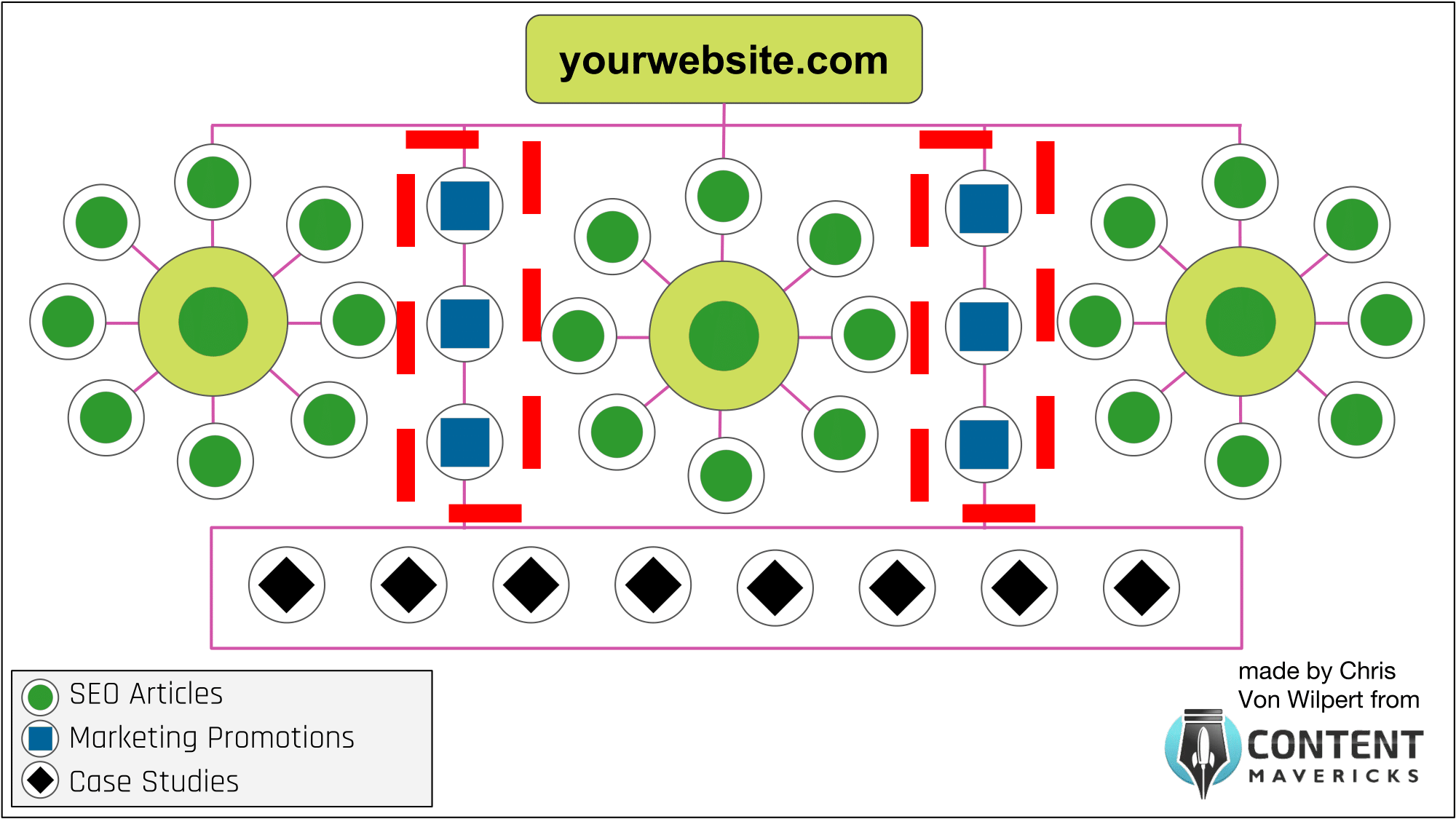
Blue Square Content
Blue Square Content is the content you use to add-value to all the leads you captured from your organic traffic efforts, and inject bulk new leads into your business. Here’s how to do it:
Every quarter you’re going to run one marketing promotion.
It doesn’t matter what it is. You are only limited by your imagination.
It could be a:
- Giveaway
- Software Tool
- Virtual Event
- Documentary
- Mini-Course
- Viral Video
- Mini-Site
- Holiday Offer
- Done-For-You Setup
- Something Else...
What you’re doing is testing what type of new content and offers work best to attract new leads to YOUR business.
I’ve worked with a company who (after testing different marketing promotions) built their email list to over one million active subscribers using giveaways as their quarterly marketing promotion method.
But that doesn’t necessarily mean it’s going to work best for YOU. To find what works best for you, you’re going to brainstorm and prioritize what quarterly marketing promotions to run using this marketing promotion matrix:

Here’s how to use the marketing promotion matrix:
- List every marketing promotion idea you have in column A.
- Rank the ease of implementing each idea (hard to easy on a 1-5 scale) in column B.
- Rank the impact each idea will have (low to high-profit on a 1-5 scale) in column C.
- Add your “ease” score to your “impact” score to find which ideas have the highest score in column D.
- Work down the list, starting with your highest total score idea.
Remember, the primary goal of your Blue Square Content is to get new leads.
So you need to keep track of your results like this:

Looking at the results above most people would consider the Giveaway to be the most successful promotion with a $0.10 cost per lead.
That’s a rookie mistake.
Our goal with our Blue Square Content is VOLUME of new leads. We are scaling our content marketing, not trying to find the cheapest leads.
If I know I can afford to spend $5 to acquire a lead, then $2 per lead is a bargain. I’ll take 40,000 leads at $2 per lead vs 10,000 leads at $0.10 per lead every day of the week.
Double down on your marketing promotion channels that:
- Drive the highest volume of leads, AND
- Cost less per lead than your maximum cost per lead target.
In the example above I’d double down on running a Holiday Offer once every year. I’d also test running a similar Holiday Offer promotion in the following quarter. If I can get repeatable results, I’d make it a regular quarterly marketing promotion for my business.
That’s how you find repeatable, scalable Blue Square Content to build your list and grow your audience.
Want to see what a successful marketing promotion looks like? I put together a swipe file of Blue Square Content examples we’re using right now to get bulk new leads using The Ski Slope Strategy. You can see all the examples inside this Ski Slope Strategy Swipe File.
Now it’s time to talk about how to get your new leads to kamikaze down your Black Diamond runs to buy your product.
Step 3: Promote Case Studies To Convert Traffic And Leads Into New Customers
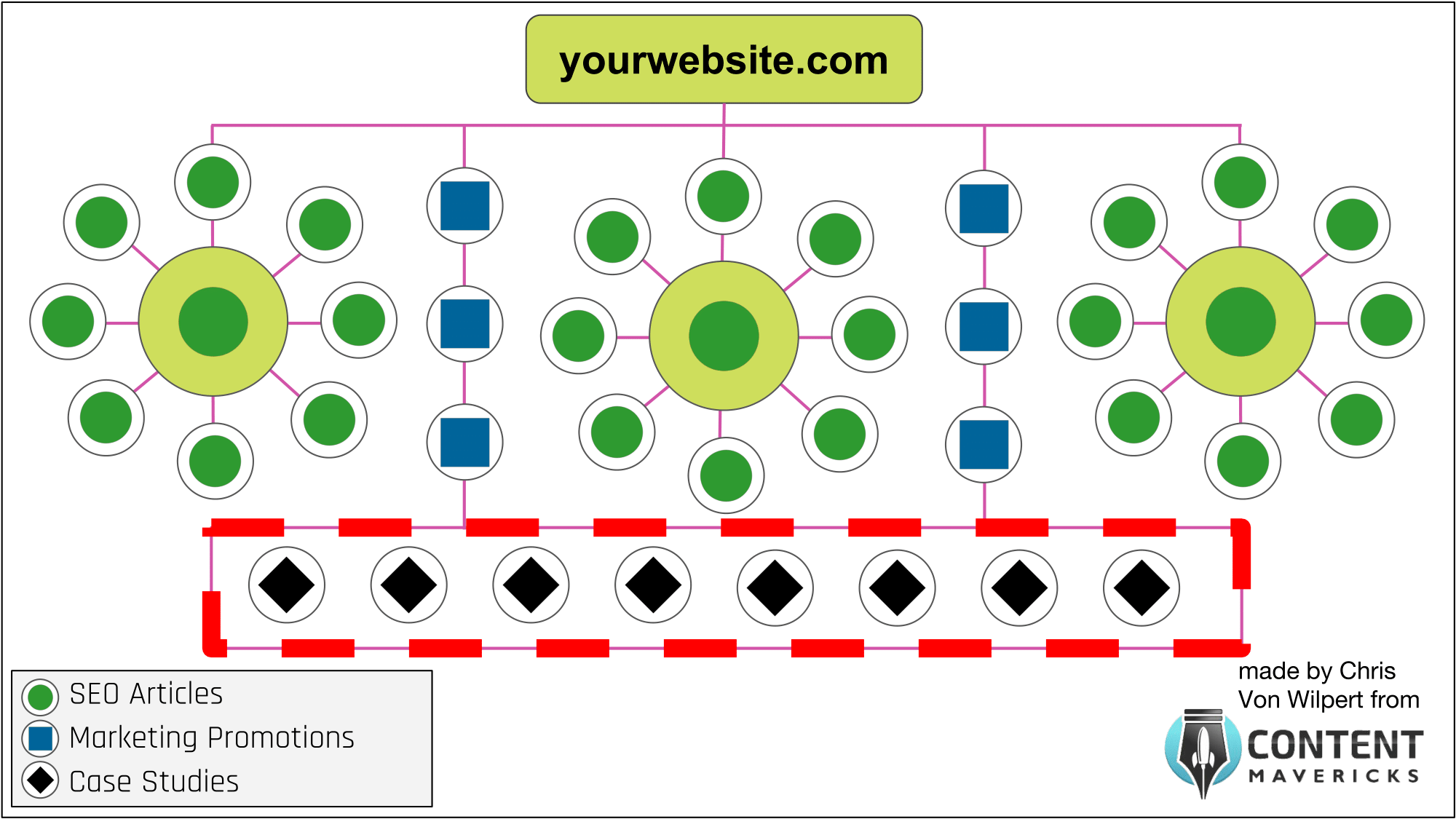
Black Diamond Content
Black Diamond Content is the key to scaling sales from your content in The Ski Slope Strategy.
It's the bottom-of-funnel content you use to convert the traffic and leads from your Green Circle and Blue Square Content into customers. Here’s how to do it:
- Track down the customers getting the best results using your product.
- Interview them (over the phone, via email, or on chat).
- Document their before/after results as a case study.
- Promote it using The Everywhere Effect Content Sales Funnel.
Producing successful Black Diamond Content isn’t easy.
First, you need to have customers getting real results from your product.
Second, you need to convince them to reveal their data publicly.
To track down successful customers I ask people on our company’s sales team what customer examples they use on sales calls:

This gets me a list of customers I can track down to make into case studies:

I’ll also spy on conversations between our sales and customer success team inside Slack channels, and often find gold nuggets like this:
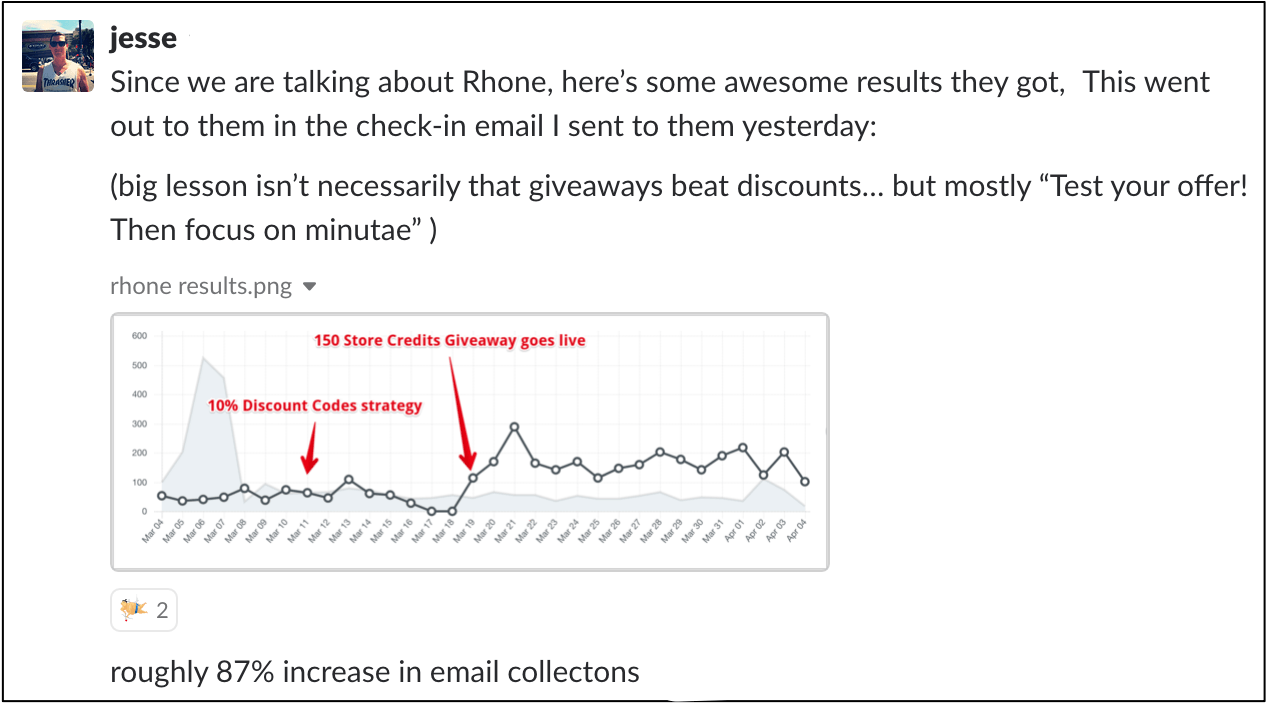
Once I’ve identified a successful customer, I’ll track down the email they used to sign up for our product, and pitch them on being featured on the site, like this:
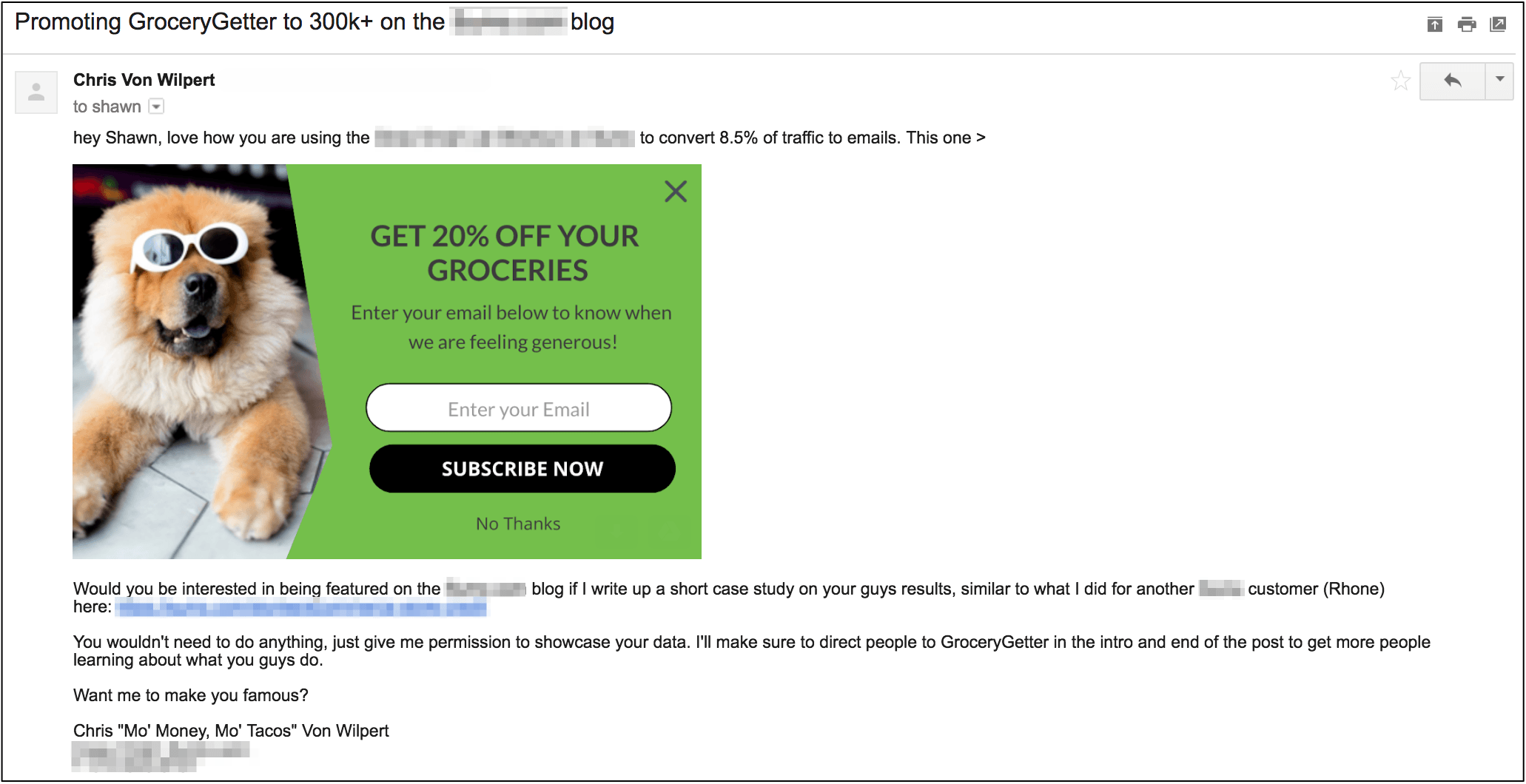
Once they agree I’ll write it up into a tactical case study other potential customers can follow to achieve similar results, with a call to action to buy our product.
Don't have time to write Black Diamond Content?
Try our new Invisible Sales Letter which is a "case study" style post you can use to scale your brand using paid traffic.
It's perfect to use in combination with The Ski Slope Strategy to convert more or your organic traffic into paying customers. Click here to learn more.
If I post this case study on our blog, and email it to our list I’ll get a handful of sales. But by doing that I’m limiting myself to promoting my case study on only one marketing channel.
Not all your traffic subscribes to your email list, and not everyone opens and clicks every email you send (check your email stats if you don’t believe me.)
So to get our case study in front of a bigger audience, we’re going to build a single powerful funnel to turn our traffic and leads into new customers.
How?
Using The Everywhere Effect Content Sales Funnel.

You’re going to follow three steps to execute this:
- Retarget your traffic and email leads (who haven’t converted into sales yet.)
- Retarget them across all the different online platforms they visit (start with $10 per day, per ad network, per case study.)
- Retarget them with new case studies and training content they’ve never seen before, with a call to action to your sales page.
When you get these three things right, something amazing happens.
All of a sudden the traffic and leads you worked so hard to acquire with your Green Circle and Blue Square content start seeing you EVERYWHERE they visit online.
To your prospects, you look like a big budget advertiser. When in fact you’re buying cheap retargeting clicks (which are even cheaper when retargeting to content because ad networks love serving up ads with educational content to their users.)
Here’s a screenshot of click costs from one of my retargeting ad sets:

Does this mean you’re going to get 19 cent clicks?
No. Your click costs might be cheaper or more expensive than mine.
But let’s say for the sake of this example that your click costs are $0.50, and you’re selling a $29/month software product.
After 10 days running your ad you will have 200 clicks with $100 ad spend.
Let’s say only 1% of clickers convert to be conservative.
That’s two $29/month customers you’ve now acquired for $100.
In two months you’ll have already recovered your customer acquisition cost, and be making a profit.
What about the 99% who didn’t convert? They’ll start seeing your other case studies everywhere they go online, and have a second chance to convert.
Why does this work so well?
- You’re retargeting a warm audience that’s already been to your site and enjoyed your content.
- You’re putting another piece of educational content in front of them, but this time with a direct response call to action to your sales page.
- Your first-time visitors may have never even considered buying from you before. Now they will start seeing overwhelming social proof everywhere they go online with the results you get for your customers, what you do and how you do it.
- You avoid ad fatigue. Instead of retargeting your visitors with the same sales message over and over again, you’re now showcasing your best case studies.
This is an advanced strategy you can use to fly under your prospects radar, and use content to acquire customers at scale.
Here are some common questions I get when I show CEOs I consult with how to execute this content sales funnel:
What ad networks should I advertise on?
There are four special places to buy these retargeting ads so you can create The EVERYWHERE Effect. I call them The Fab Four:
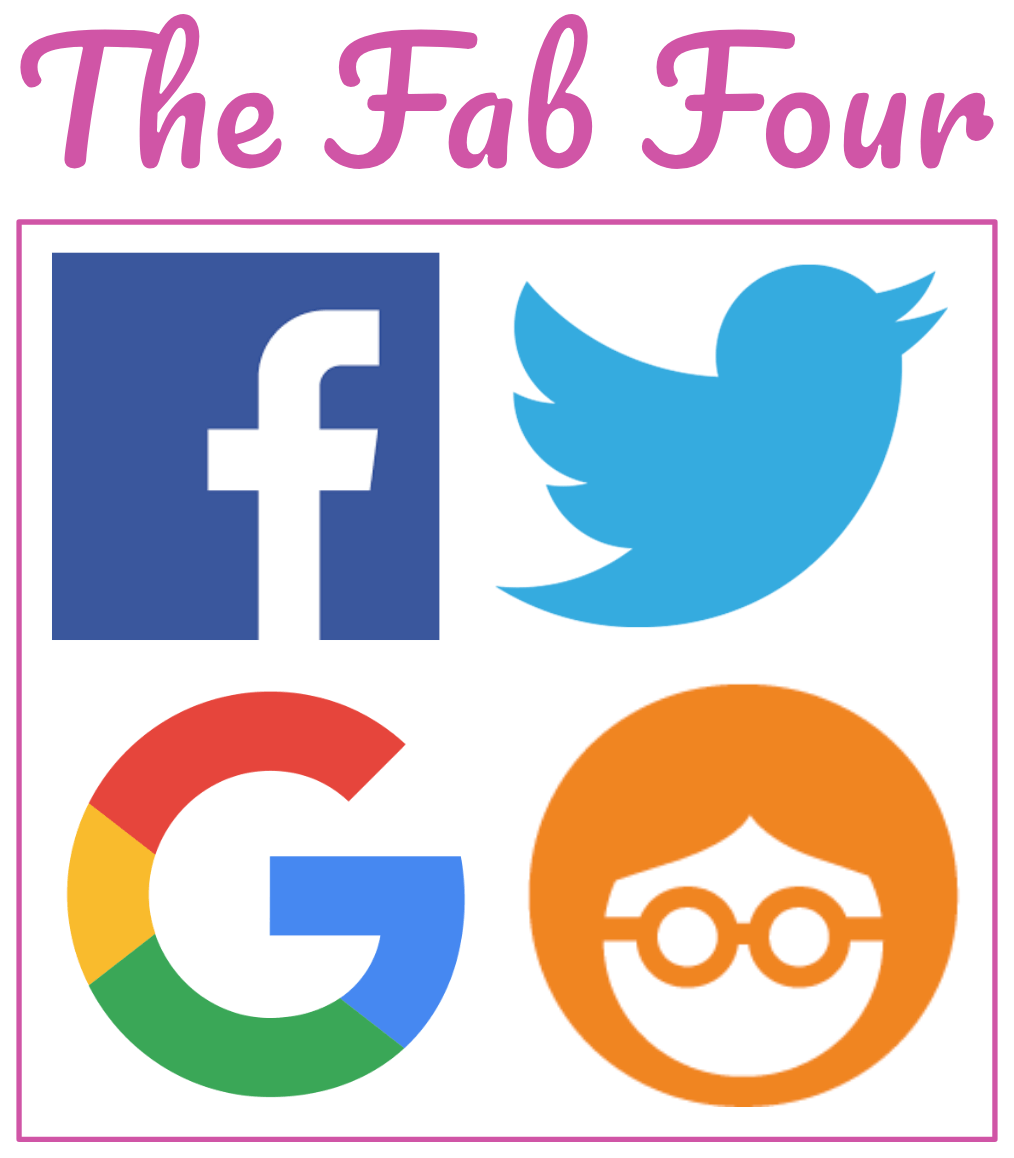
1. Facebook, which gets the attention of people who are checking their Facebook feed at night after work.
2. X (formerly Twitter), which has a large audience of professionals and business owners who regularly check and post status updates to their X feed.
3. Google (YouTube, Google Display Network), which gets your ads in front of people watching YouTube videos and browsing websites online.
4. Outbrain, which gets your ads on large publications like CNN, Fast Company, Wired and other niche publications you can’t get access to with Google’s ad inventory.
Outside the Fab Four, there are other ad networks to retarget your website visitors online like LinkedIn, Amazon, other content networks like Taboola, and more. All my retargeting focuses almost exclusively on the Fab Four. I can’t think of a single business who’s audience doesn’t visit sites on those four channels.
A quick note: You should advertise on all four channels if you want to create The EVERYWHERE Effect. But don’t let setting up new ad accounts, installing new retargeting pixels, and creating new ad copy overwhelm you.
Start with one retargeting ad for one of your case studies on one ad network. Then scale up from there.
Which brings me to the next question I often get...
What if I can’t afford to spend $10 per day, per ad network, per case study?
If all you can afford is $10 per day, that’s fine. Here’s what your plan of attack should be:
- Pick the one ad network where you know your audience spends most of their time online.
- Advertise your case study on there for $10 per day.
- As you start to see results, roll out the same messaging on the other ad networks. If you’re not seeing results, try a new case study.
- When you’re ready, start advertising your second case study.
Rome wasn’t built in a day. Don’t expect your new content sales funnel to be either.
But you’re probably still wondering one thing...
How long do I need to wait to see results from my ads?
When it comes to buying ads, most people throw in the towel too early.
As a general rule of thumb, you need to be willing to spend 5X your maximum cost per acquisition (CPA) before cutting a losing case study.
Say for example I sell a $29/month software product, and I’m willing to spend $100 to acquire that sale. In that case I need to be willing to spend $500 buying enough data to see if my case study will convert under my $100 CPA.
If you’re not willing to spend money “buying data,” you shouldn’t use this strategy yet. Focus on your Green Circle and Blue Square Content until you have enough ad budget to start testing, building, and scaling your content sales funnel.
Not every case study you advertise will convert like you expect it to. But some will convert like crazy, and become an asset you can use in your content sales funnel long term to scale, and acquire new customers.
Enjoy the game.
Want to see what a high converting case study looks like? I put together a swipe file of Black Diamond Content examples we’re using right now to acquire new customers using The Ski Slope Strategy. You can see all the examples inside this Ski Slope Strategy Swipe File.
Now You Try It
Every scalable business is built on consistent high-quality traffic and a winning sales funnel.
But sending one email to your list with a link to your content, then hoping and praying for sales isn’t a scalable strategy.
Sure it can work. But we found a more SCALABLE solution: The Ski Slope Strategy.
It’s helped us scale our content marketing to >1 million visitors, >100,000 leads, and >1,000 recurring revenue customers in one year.
With this strategy you can go viral in your market (without sending emails to site owners begging for links to every piece of content you create.)


